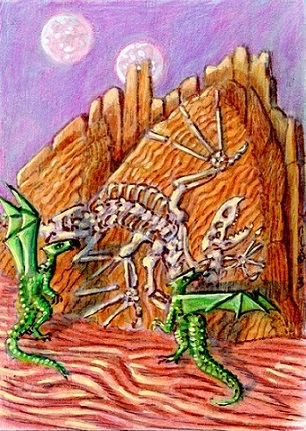ShopDreamUp AI ArtDreamUp
Deviation Actions

Private collection, please do not unlock
private drawings such as sketches, portraits and various handmade drawings. Due to the fact that it is not possible to hide folders, I decided to use this form of collecting my works
$100/month
Suggested Deviants
Suggested Collections
You Might Like…
Featured in Groups
Comments6
Join the community to add your comment. Already a deviant? Log In
Serial homologies are generally dictated by hox genes that control the development of body segments. Arthropods are the best group in the animal kingdom. Hox genes insure that paired limbs develop in bilateral symmetry. They also can program for genetic instructions to repeat themselves in an embryo. This is how a centipede body plan can evolve from a form with far fewer body segments. Likewise suppressor genes can evolve that instruct these prior genes to turn off.
Vertebrates started with a segmented body plan. The first chordates date back to the Cambrian. They had serial sets of epaxial and hypaxial muscle couplets surrounding the notochord. The vertebrae formed as ossifications at these loci. It was possible for paired fins to have developed at each segment, but the fossil record indicates that this option was never exploited. The trend was to progressively reduce the number of paired limbs. The genes for reversing this trend never developed.Devonian Acanthodians actually had three pairs of fins. However these rigid extremities were not optimal for weight bearing. That ability developed in sarcopterygians. These had already reduced their fins down to two pairs before they emerged from the water. The result is that the opportunity for terrestrial vertebrate sectipeds was never realized. It could have happened, bit it didn't.
This fanciful drawing suggests a world in which that evolutionary avenue actually came to be.
Vertebrates started with a segmented body plan. The first chordates date back to the Cambrian. They had serial sets of epaxial and hypaxial muscle couplets surrounding the notochord. The vertebrae formed as ossifications at these loci. It was possible for paired fins to have developed at each segment, but the fossil record indicates that this option was never exploited. The trend was to progressively reduce the number of paired limbs. The genes for reversing this trend never developed.Devonian Acanthodians actually had three pairs of fins. However these rigid extremities were not optimal for weight bearing. That ability developed in sarcopterygians. These had already reduced their fins down to two pairs before they emerged from the water. The result is that the opportunity for terrestrial vertebrate sectipeds was never realized. It could have happened, bit it didn't.
This fanciful drawing suggests a world in which that evolutionary avenue actually came to be.

































